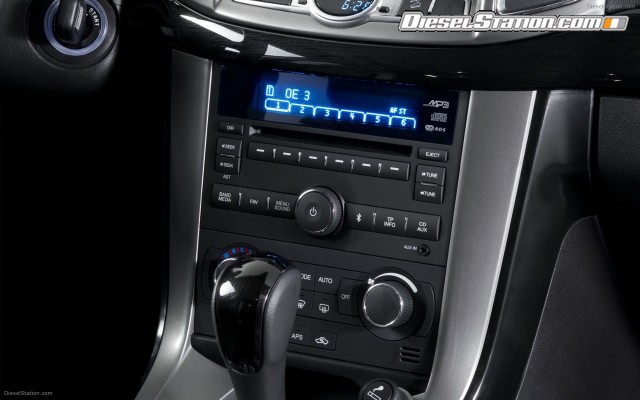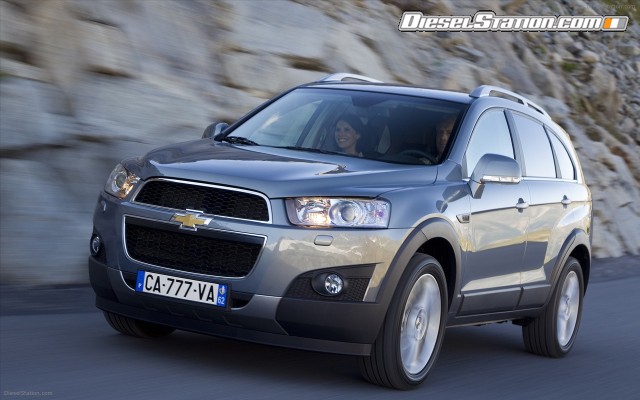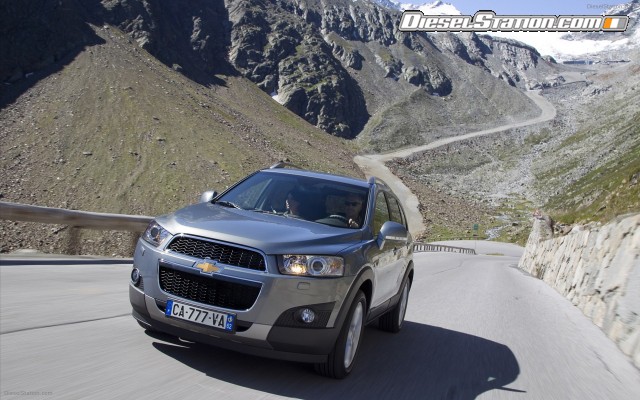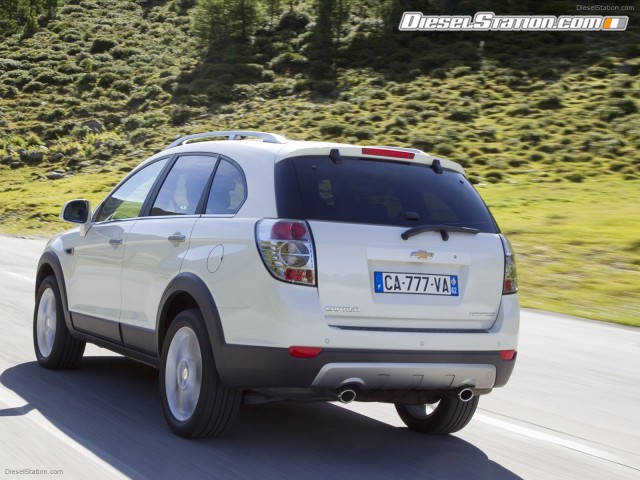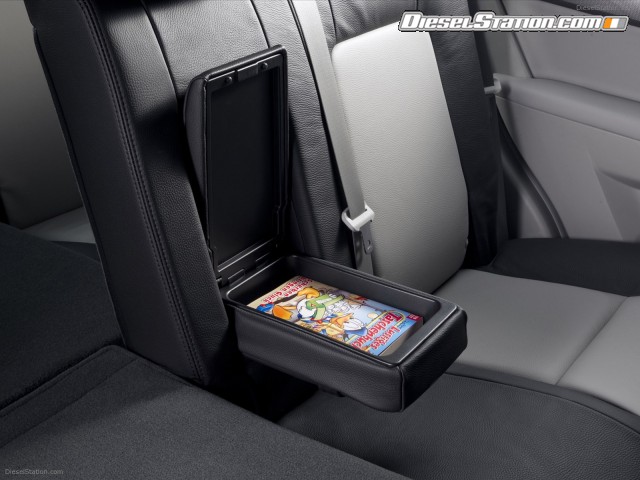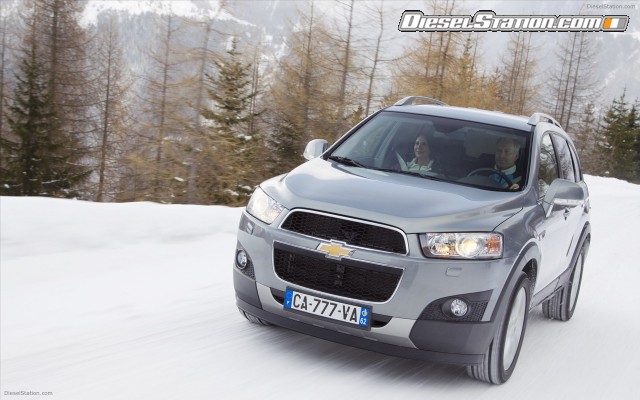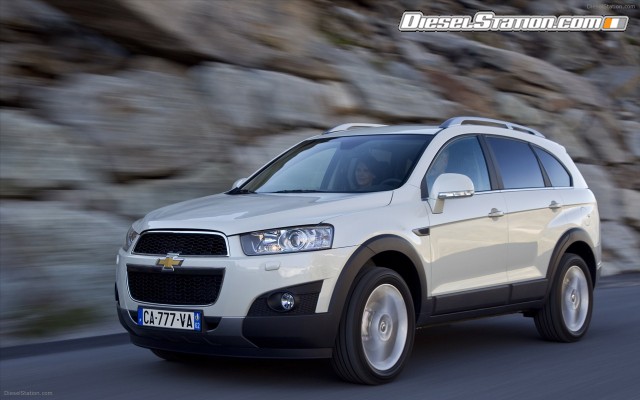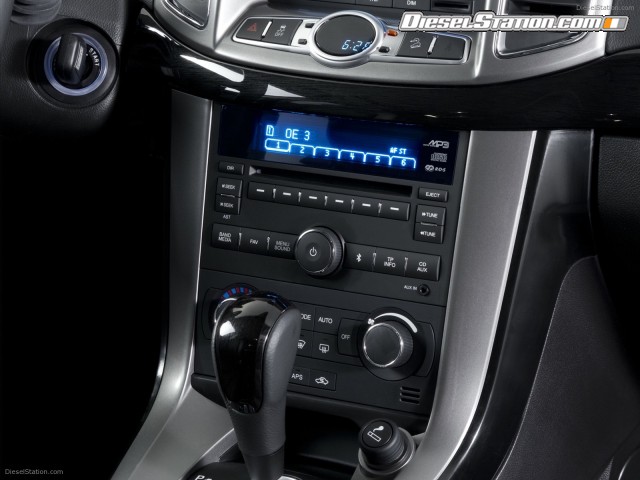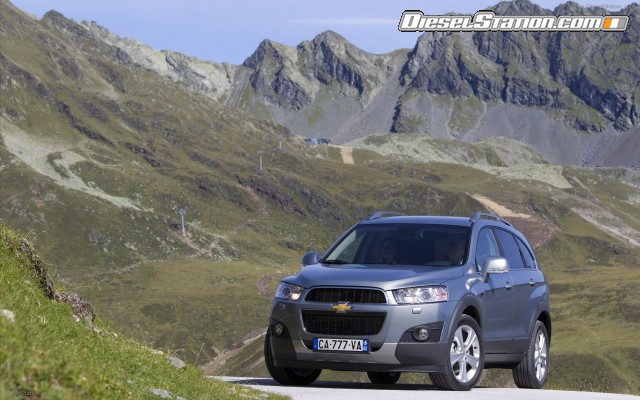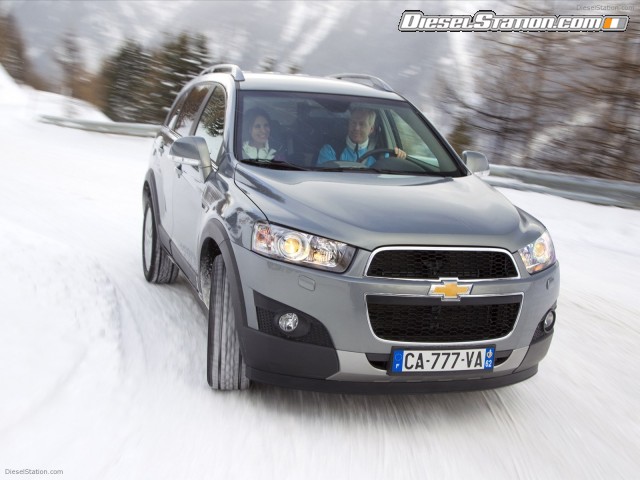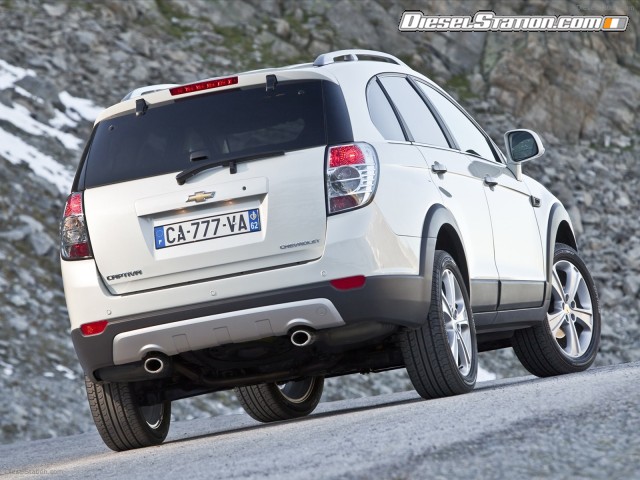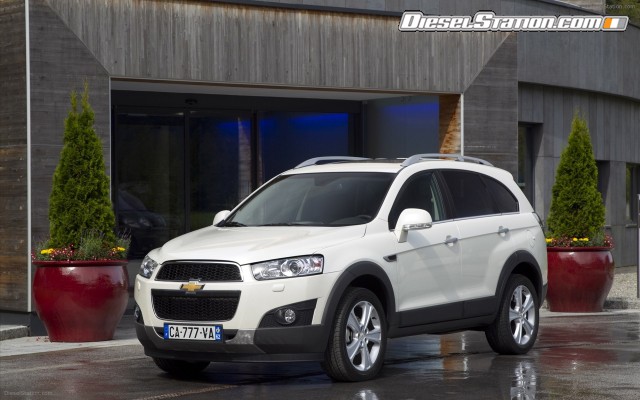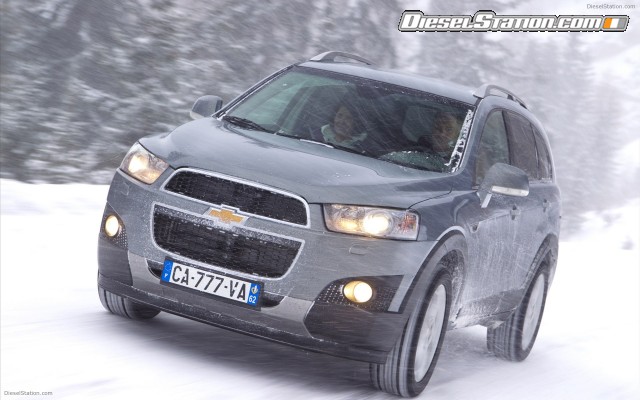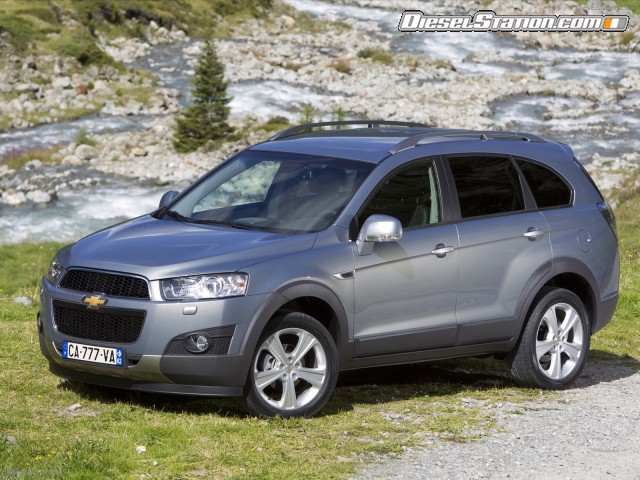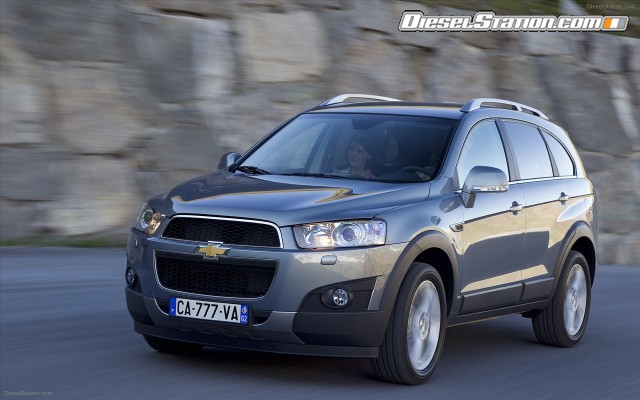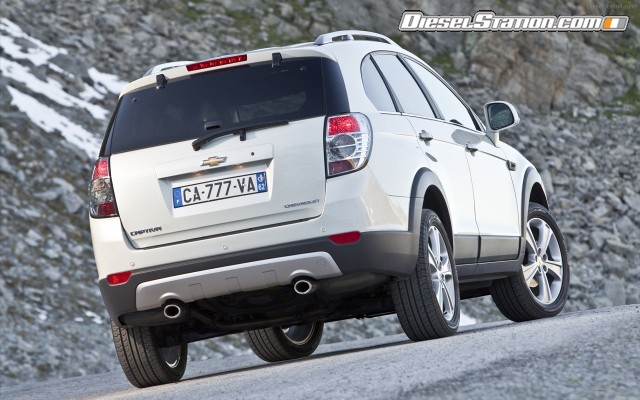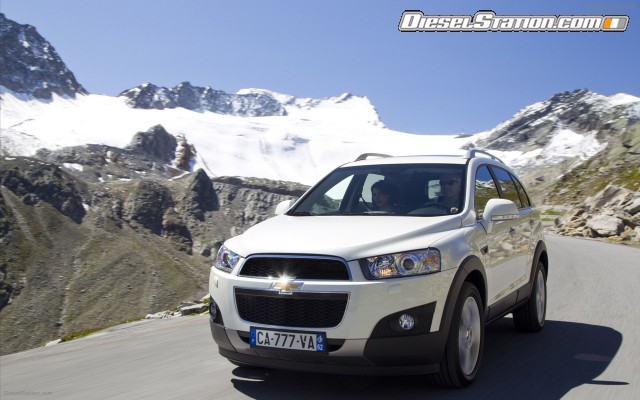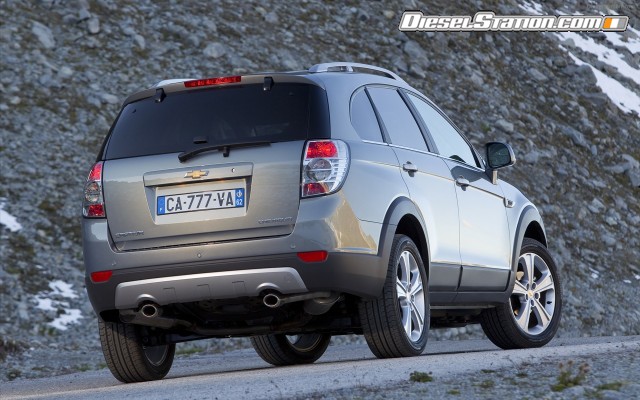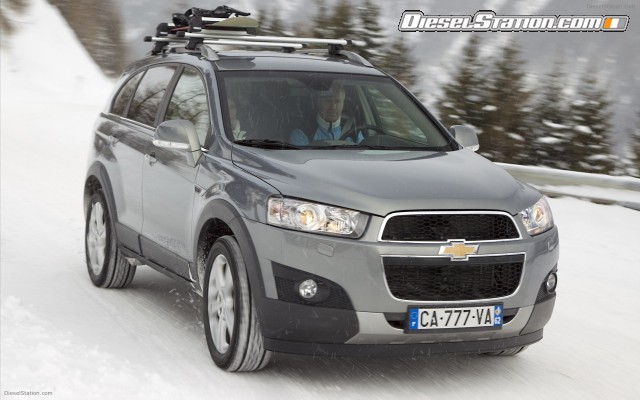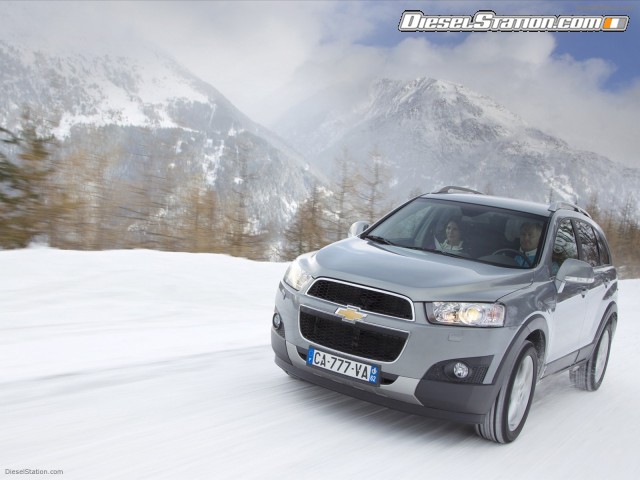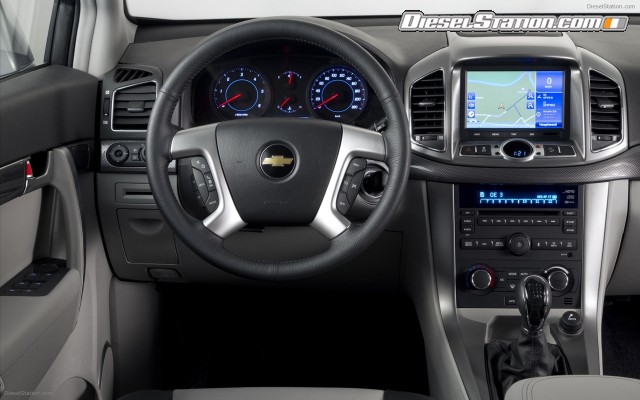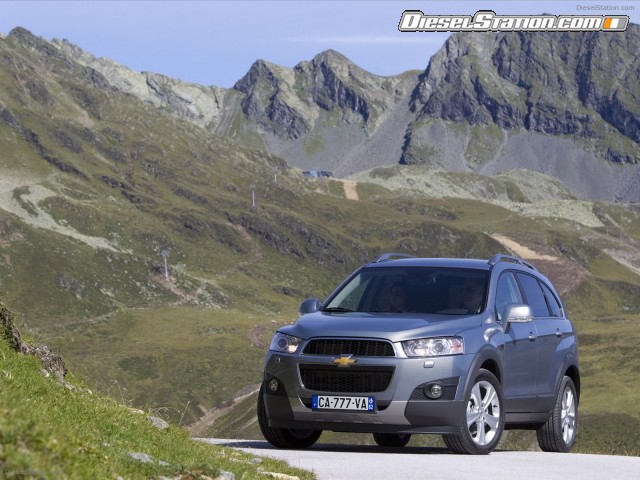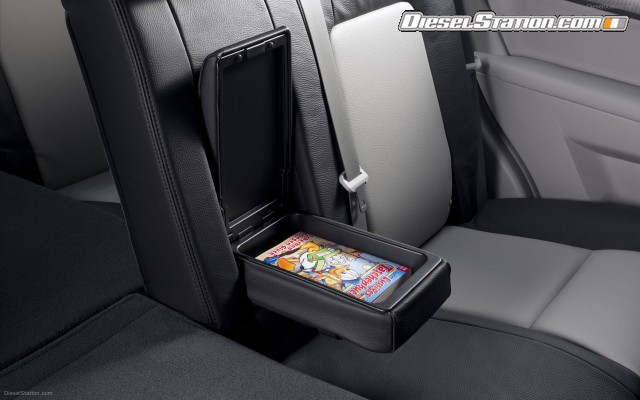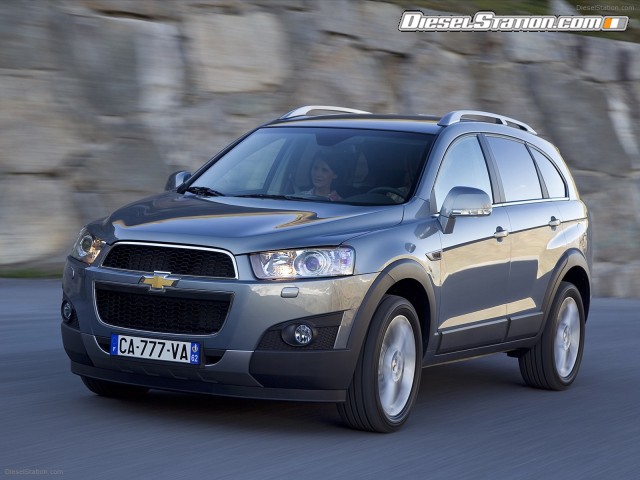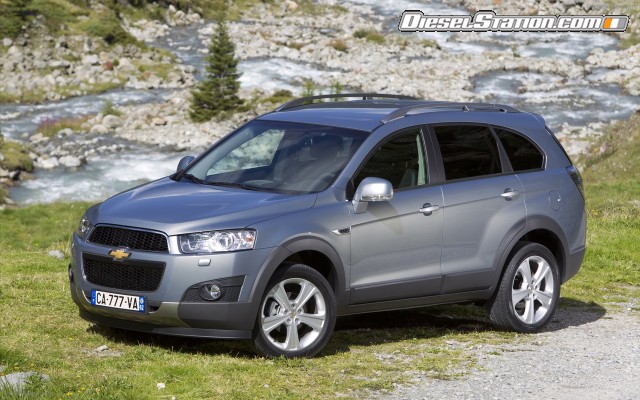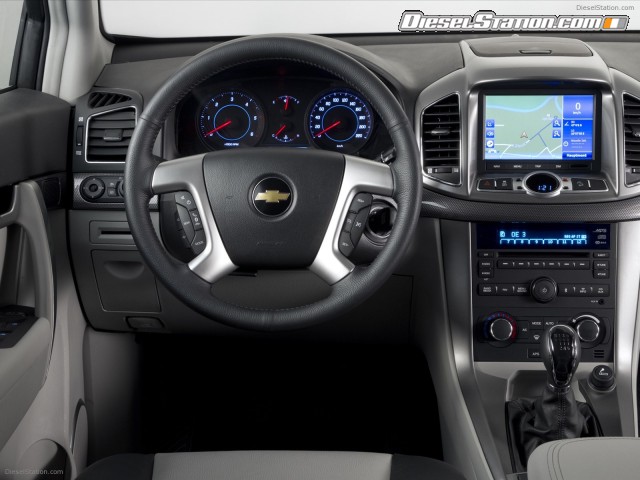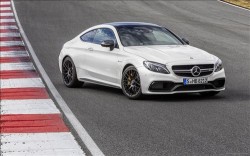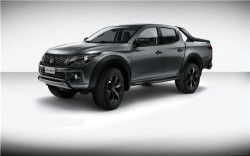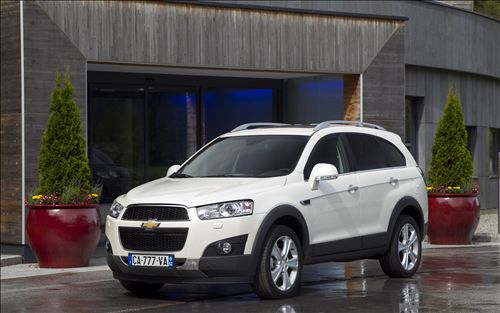Chevrolet Captive 2012 receives a major overhaul over the previous 2011 model. The updates including a fresh exterior design to give it an even more confident and dynamic presence; an all-new range of the latest powerful and fuel efficient engines; chassis modifications to improve ride and handling and an upgraded interior.
- Four new engines, new manual and automatic six-speed transmissions
- Fresh, more aggressive exterior with distinctive Chevrolet 'face'
- Enhanced, up-market interior
- Featuring Hill-Start Assist, electric park brake and rear view camera
- Five or seven seat versatility, plus front or all-wheel drive
- Inventor of the SUV - at home in growing segment
Louis Chevrolet would be proud of the latest SUV entry, the new Captiva. Chevrolet's full blooded compact SUV has been given a major makeover for 2011, including a fresh exterior design to give it an even more confident and dynamic presence; an all-new range of the latest powerful and fuel efficient engines; chassis modifications to improve ride and handling and an upgraded interior.
Chevrolet was the creator of the first sports utility vehicle back in the 1930's with the iconic Suburban, a nameplate that has spanned an incredible seven decades and is still going strong in the U.S. today.
"Captiva owners have already enjoyed plenty of choice, with five or seven seats and all-wheel or front-wheel drive," says Wayne Brannon, president and managing director of Chevrolet Europe. "The 2011 Captiva offers four new engines mated with a new six-speed transmission; a 2.4 liter petrol unit, a 258 hp 3.0 liter V6 and two variants of our 2.2 liter turbo-diesel."
Amid all the changes and improvements that have been made, the new Captiva retains the advantages of its adaptable, theater-style seating in three rows which comfortably accommodate up to seven passengers and the electronically controlled all-wheel drive system that distributes power as it's needed.
"When the original Captiva came to market back at the end of 2006 it marked a turning point for the brand, a clear signal of Chevrolet's intentions of becoming a mainstream player in the highly competitive European market. Four years on, the Captiva has brought many people to the Chevrolet brand for the first time, with the design, quality and sheer versatility being mentioned as particular highlights by owners," Brannon continued.
Captiva captures the spirit of the age
The appeal of a vehicle like the Captiva is that it will fulfill its duties on the shopping run one day, it will then take half the football team to the match the next day, followed by some off-roading or a trip onto the beach on the weekend.
It is that kind of modern versatility and can-do attitude that encapsulates the spirit of a car like the Captiva, and why it is expected to appeal not only to family motorists but to anyone seeking an alternative to the conventional sedan or hatchback, a vehicle which says something about their lifestyle.
Wayne Brannon, Chevrolet Europe's president and managing director, believes now is an excellent opportunity for the new Captiva to make further inroads into market share. "The new model is very much a car of the times, designed for families and their everyday requirements yes, but also for those looking to go out and have some adventures. That's what an SUV like the Captiva is all about, it makes a statement and for many it's an extension of their lifestyle. The new Captiva also personifies what the Chevrolet brand is all about in that it transcends social status or profession and will, we think, appeal to people from all walks of life."
Across Europe, Captiva has sold around 120,000 units since the end of 2006, with its popularity not restricted to one region; strong sales have been recorded in Italy, Spain, Germany, Turkey, France and the U.K. The popularity of the SUV segment shows no signs of abating; back in 2005, it represented 6.2% of the total European market, while at the end of October 2010 its share of the market had rocketed to nearly 10%. In Western and Central Europe, the segment represents 9% of all sales, in line now with both the mid-size and mini car sectors, which only a few years ago would have eclipsed SUV sales.
Strong exterior design
The Captiva has won many friends for its exterior design and with the new model it just got even better. A number of features are immediately noticeable when viewing the new Captiva from the front: the re-shaped and sharply sculptured hood, a new larger grille with the Chevrolet signatories such as the dual opening and the 'bow-tie' badge which sits proudly in the middle, and the new cylindrical prism-style headlamps and integrated turn signals on the outside rearview mirrors, all up-market features which belie the Captiva's entry price point.
Moving round to the front fenders, the side air-vents now take on a more angular shape to emphasize the new Captiva's sporting intentions. Viewing the new model from the A-pillars back, the Captiva retains its handsome profile, characterized by a subtle rising shoulder line. All of these design changes contribute to a stronger, more athletic stance but also ensure the new Captiva has a look that is immediately recognizable as one of the new breed of Chevrolets.
The re-sculptured and more muscular wheel arches will be able to accommodate wheel sizes of between 17 and 19 inches; and setting the Captiva's body off perfectly is a new range of exterior colors.
Taewan Kim, GM Vice President of Design, in charge of the Captiva project: "The key ingredient of the new design that you see with Captiva is confidence. The changes we have made to the front profile give the new Captiva an even more athletic stance and strong overall character. We wanted to ensure that we lost none of the spirit of the original model, while giving it a stronger and more sophisticated appearance. Captiva has presence but without looking overly big; it looks capable but also compact."
Power with efficiency – four new engines
It's under the Captiva's new hood that the most far reaching changes have taken place. No less than four new powerful engines will be available, combined with a new manual or automatic six-speed transmission. They will give Chevrolet customers a smooth, purposeful and efficient drive experience and make the new Captiva one of the most powerful compact SUVs on the European market.
The new engine line-up, which is comprised of two gasoline engines of 2.4 and or 3.0 liters, and two turbo-diesel variants both of 2.2 liter displacement, incorporates a host of advanced technologies, aimed at delivering an optimal balance of performance and fuel economy.
The new engines feature a number of firsts for Captiva, such as the variable valve timing (VVT) on the dual overhead cam 2.4 liter gasoline ECOTEC, helping to deliver its 167 hp and a fuel economy on the combined cycle of 8.9 liter/100 km for the manual version. Performance figures for the new Captiva with 2.4 liter gasoline engine include a 0–100 km/h time of 10.5 seconds.
With the introduction of a new 3.0 liter 258 hp V6 gasoline engine – available by mid-2011 - Captiva gets direct injection for the first time as well as variable valve timing, and with an engine torque figure of 288 Nm, Captiva becomes one of the most powerful compact SUVs on the market. Its performance is impressive, with a top speed of 198 km/h and a 0-100 km/h time of 8.6 seconds; fuel consumption on a combined cycle is 10.7 liter/100 km.
Many customers will opt for one of the diesels, and they can be sure of getting the latest in diesel technology and efficiency. The new 2.2 liter unit will be available in two power outputs of 163 or 184 hp. This latest generation engine is an advanced, four cylinder dual overhead cam (DOHC) turbo-charged unit featuring a high-pressure common rail fuel injection system and variable geometry turbo charger (VGT) with intercooler.
A reduced compression ratio when compared to previous generation diesels has enabled the new Captiva to achieve higher power output but with lower emissions. The engines' CO2 emission levels are below key CO2 taxation thresholds, which translates into potential savings for customers.
Performance figures for the new Captiva using the 163 hp engine are a 0-100 km/h time of 9.9 seconds and maximum speed of 189 km/h, while for the 184 hp version 0 to 100 km/h is 9.4 seconds and it can reach a maximum speed of 200 km/h. Fuel consumption for both versions on a combined cycle is an identical 6.4 liter/100 km.*
An integral part of Captiva's new powertrains is a new six-speed automatic transmission. The new automatic gearbox can be used in full automatic mode, or if the driver prefers, Driver Shift Control (DSC) allows for manual shifting.
The new automatic has been engineered with a wide spread of gear ratios to optimize the correlation between performance and fuel economy. So while first gear is 'steep' to enable fast take-off, a tall sixth gear lowers engines revs at higher speeds, maximizing fuel efficiency and reducing internal noise and vibration.
Alternatively, a six-speed manual gearbox can be specified with both, the 2.4 liter gasoline and 2.2 liter, turbo diesel engines.
The new Captiva's chassis has been tuned to further enhance vehicle dynamics, improving cornering, roll characteristics and ride feel. With Electronic Stability Control (ESC), Traction Control System (TCS) and Braking Assist System (BAS) standard, the Captiva provides a high level of safety.
The electronically controlled speed-sensitive steering allows for better steering precision and requires lower steering effort by the driver. Hill Start Assist (HSA) features for the first time on Captiva. It holds the vehicle on gradients of 3% or steeper for 1.5 seconds after the brake pedal has been released, to assist in a smoother and safer drive away from standstill.
Both of the 2.2 liter turbo diesels as well as the 2.4 liter gasoline engine can be ordered in front or four-wheel drive configurations. New Captiva keeps the active on-demand four-wheel drive system, a practical as well as environmentally responsible solution which uses front-wheel drive under normal driving conditions and only utilizes all-wheel drive – which is activated automatically via an electronic clutch – when more traction is required, such as on slippery surfaces or for hill starts for example.
When four-wheel drive is activated, power between the front and rear wheels is distributed automatically, up to a ratio of 50:50. In addition to wheel spin, the system also senses engine speed, vehicle speed, yaw and steering angle. The all-wheel drive system is fully integrated into the ABS and ESC systems to increase control yet further.
Summary of key engine data
|
Figures for automatic transmissions in brackets.
* Figures are for FWD version.
Major makeover for interior
Climb aboard the new Captiva and driver and passengers will still be welcomed by that airy and spacious interior, with storage space that is among best in class and with the option of either five or seven seats. Cargo volume with third row down is 769 liters (477 liters below window line), with second and third rows down it is 1,577 liters (942 liters below window line).
The Captiva's upgraded interior now features an array of new finishes and textures including all-new seat fabrics and improved interior décor appointments like satin chrome rings around the vents, to give the car a more up-market feel and look. Designers have put to good use some of the elements featured on other new Chevrolet models, such as the ice-blue back lighting and the 'wrap-round' design of the front fascia which flows into the front driver's and passenger doors, creating the Chevrolet dual-cockpit look.
Additional storage spaces have been cleverly integrated which add to the feeling of spaciousness and practicality; so for example with the new Captiva benefitting from Hill Start Assist, eliminating "roll-back" on hills and an electric park brake, space has been opened up for further storage in the center console, including two cup holders.
Passive safety is well catered for with the inclusion of six airbags – dual front and side airbags for the driver and front passenger and curtain airbags for the outer rear passengers – and three-point seat belts with belt tensioners and belt force limiters for the front seats. Isofix anchor points are fitted to the outer seats of the second row, to facilitate the quick and secure fitting of child seats.
The new Captiva's audio system includes Aux-in and Bluetooth connectivity with commands integrated within the steering wheel as standard. A seven-inch navigation system is available with full European road coverage and integrated rear view camera for parking assistance. The audio speakers have been re-positioned in the doors, while passengers will enjoy their audio experience all the more thanks to a raft of engineering improvements to the interior acoustics, including improved isolation on the windshield, doors and headlining, all of which has resulted in reduced road, wind and engine noise.
Chevrolet – inventor of the SUV
Chevrolet knows a thing or two about building sport utility vehicles. While the start of 2011 marks the launch of its latest SUV offering with the new Captiva, it was only last year in 2010, that the company commemorated 75 years worth of production of the iconic Suburban, widely hailed as the first ever SUV, first launched in 1935.
The 2010 75th Anniversary Edition Suburban that Chevrolet launched in the US might not share too many commonalities with the original incarnation (where a radio, heater and rear bumpers were extra cost options) but the first ever SUV could still seat 8 people and featured easy to remove seats to open up a generous cargo area. To that extent, the core capabilities of the Suburban have remained true for over seven decades and generations of people will testify that a Suburban will reliably haul people and their gear.
The new Captiva meanwhile will continue the Chevrolet heritage of innovative and value for money SUVs, offering powerful and efficient engines, all-wheel drive capability, versatility for up to seven passengers and an interior quality that belies its price.
Launch across European markets begins in spring 2011.




